-
Nuclear waste repositories in suburbia?
Finding sites for nuclear waste storage is a growing problem, with decision makers running into the “not in my back yard” problem; the demise of Nevada’s Yucca Mountain project is but the latest example; researchers find that acceptance of sites for spent nuclear fuel repository may well depend on gender and economic background: in Finland, at least, affluent men more often are more receptive to the idea of locating such facilities near their neighborhoods than women or disadvantaged people
-
-
Security increases around Pennsylvania nuclear disposal site
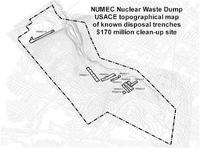
Security around a nuclear waste site in western Pennsylvania has been upgraded, with DHS armed security guards replacing private guards around the site; the reason for the elevated security is the finding, by the Army Corps of Engineers, of more “complex” nuclear materials on the site; it was originally believed that the site contains only low-level nuclear material
-
-
Automated pavement crack detection and sealing system to extend roadways life
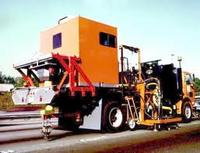
Researchers from the Georgia Tech Research Institute developed a prototype automated pavement crack detection and sealing system; in road tests, the system was able to detect cracks smaller than one-eighth-inch wide and efficiently fill cracks from a vehicle moving at a speed of three miles per hour
-
-
Knee-strapped power harvester to do away with batteries

Battery-powered devices may soon be a thing of the past; researchers have created an innovative energy harvester to power some of the latest wearable gadgets; the energy harvester, strapped to the knee joint, converts knee motions into energy
-
-
Fracking poses low risk for causing earthquakes

Fracking has a low risk for inducing earthquakes that can be felt by people, but underground injection of wastewater produced by hydraulic fracturing and other energy technologies has a higher risk of causing such earthquakes, says a new report
-
-
New research into flood impacts in the South of England -
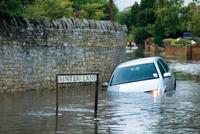
Researchers have developed and applied a method for understanding the effects and impacts of coastal flooding across the south coast of the United Kingdom, which could contribute to more effective flood forecasting, defense design, and land use planning
-
-
Seabed carpet could harness wave energy
A synthetic “seabed carpet” that mimics the wave-damping effect of a muddy seafloor could be used to extract energy from waves passing over it. As well as offering a new way to produce clean and cheap electricity, the carpet — which has not yet been built — could be used to protect coastal areas against strong waves and provide areas of safe haven for boats in stormy seas
-
-
U.S. energy situation significantly improved
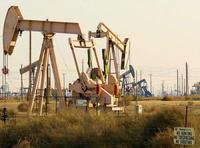
The rhetoric used to discuss the U.S. energy situation does not reflect the new, and much more favorable, energy reality in which the U.S. now finds itself; the last four years have seen a turnaround in U.S. oil production, which has risen 25 percent since 2008 and could increase by 600,000 barrels per day this year; the U.S. net petroleum imports have fallen from 60 percent of total consumption in 2005 to 42 percent today; in 2011 the United States has seen the largest increase in oil production of any country outside of OPEC; significant increases in oil production in Canada and Brazil have significantly bolstered the position of the Western Hemisphere in the global oil production market shift
-
-
Expanding the concept of “urban watershed” to reflect emerging realities
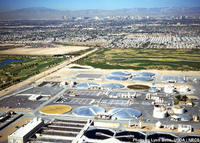
Within two decades, 60 percent of the world’s population will live in cities, and coping with the resulting urban drinking water and sanitation issues will be one of the greatest challenges of this century
-
-
Explaining extreme months
Two months in Midwest history — March 2012 and December 1889 — stand out as the warmest winter months in more than a century of weather records; scientists investigated why these months, separated by 123 years, were so exceptional
-
-
Replacing uranium with thorium to lead to safer, sustainable nuclear power
With the 50 percent increase in global population which is expected over the next fifty years, in order just to maintain per capita electricity consumption, a major power station would need to go online every day somewhere in the world; if this increase in power production is going to be low-carbon, then nuclear power has to play a role in that; scientists say; if uranium was replaced by thorium as a fuel source, current reactor technology could be used and nuclear waste could be safely recycled indefinitely
-
-
Quick-curing concrete for infrastructure, mining disaster recovery
A quick-curing concrete can be sprayed to reinforce structures — buildings, runways, tunnels, bridges, dams – damaged by an act of terror or natural disaster; the spraying can be done almost immediately, before the structure fails catastrophically, providing safety for rescue workers who risk their lives minutes after disasters hit, and for still stranded in or near the damaged structure
-
-
New research to improve protection and recovery from major floods
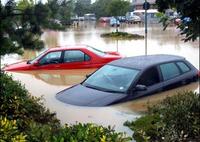
As parts of the United Kingdom suffer further flooding with more heavy rain forecast, three research projects funded by the Engineering and Physical Sciences Research Council (EPSRC) could radically change the way U.K. government and local authorities prepare for and respond to floods, mitigating future risks
-
-
Electrified snail produce electricity from natural sugar in its body
The world’s first “electrified snail” has joined the menagerie of cockroaches, rats, rabbits, and other animals previously implanted with biofuel cells that generate electricity — perhaps for future spy cameras, eavesdropping microphones, and other electronics — from natural sugar in their bodies
-
-
Growing uncertainties about the global water situation

There is no life without water; catastrophes like droughts or strong rains reflect our dependence on the water cycle and climate system; it is thus important to understand details of the water cycle among the atmosphere, oceans, and land
-
More headlines
The long view
Falling Space Debris: How High Is the Risk I'll Get Hit?
An International Space Station battery fell back to Earth and, luckily, splashed down harmlessly in the Atlantic. Should we have worried? Space debris reenters our atmosphere every week.
Using Drone Swarms to Fight Forest Fires
Forest fires are becoming increasingly catastrophic across the world, accelerated by climate change. Researchers are using multiple swarms of drones to tackle natural disasters like forest fires.
Strengthening the Grid’s ‘Backbone’ with Hydropower
Argonne-led studies investigate how hydropower could help add more clean energy to the grid, how it generates value as grids add more renewable energy, and how liner technology can improve hydropower efficiency.
LNG Exports Have Had No Impact on Domestic Energy Costs: Analysis
U.S. liquified natural gas (LNG) exports have not had any sustained and significant direct impact on U.S. natural gas prices and have, in fact, spurred production and productivity gains, which contribute to downward pressure on domestic prices.
